first level title
Our society is in the era of an unprecedented information explosion. Computers, smart devices, TVs, home security systems, wearable devices, cars, and even robots are generating and using data all the time. With the development of AI and the Internet of Things (IoT), huge equipment groups will generate massive amounts of data. The future will be a digital era in which data becomes the main factor of production. The exponentially increasing amount of data puts forward higher requirements for the current data storage system. Services include data storage, management, and retrieval.
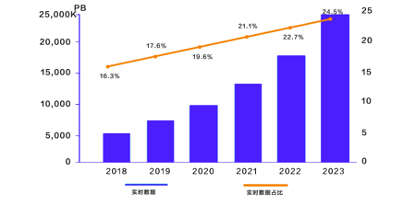
image description
Global real-time data trend preview data source: IDC
The market share of each cloud service market in 2021 is as follows:
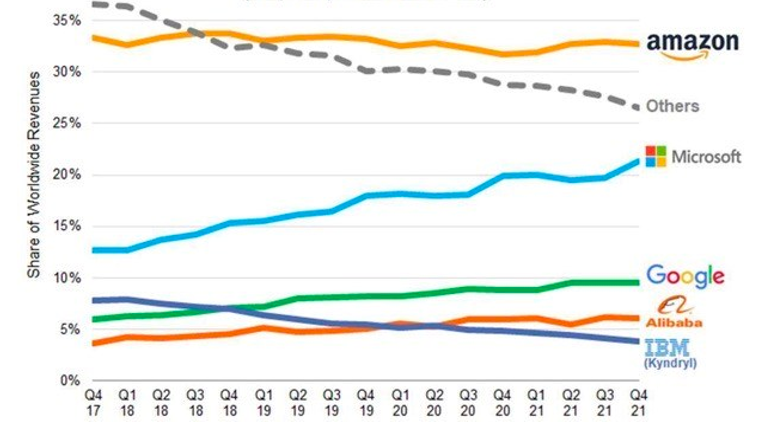
image description
Among them, Amazon Web Services has maintained its leading position in the industry all year round, and its revenue in 2021 has reached 62 billion US dollars, accounting for about 33% of the cloud service market share. Ranked second is Microsoft, which has experienced amazing growth in recent years, and its market share has increased from 13% in 2017 to 21% in 2021. As far as Amazon Web Corporation is concerned, the four core departments are: cloud computing, cloud storage, network and software. The revenue growth of each department is as follows:
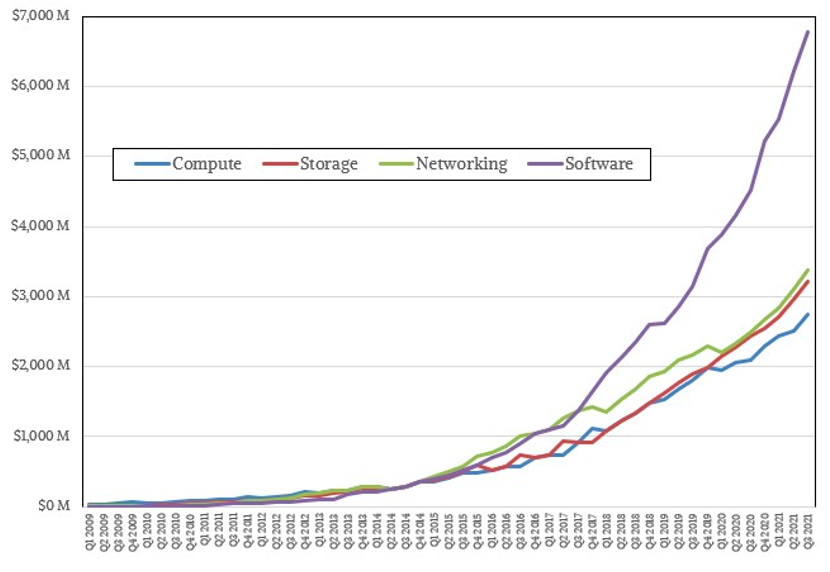
image description
The data in the figure shows that the fastest growing sector is software services, with revenue reaching nearly US$7 billion in the third quarter of 2021. The growth curves of cloud computing, cloud storage, and network services are relatively close to the revenue, which is around US$3 billion, which is double the revenue level in 2018. To sum up, in the era of big data, the market growth space for cloud storage is still very broad.
first level title
2. Pain points of centralized storage
As time progresses, the services of centralized cloud storage continue to improve and the prices continue to decrease. However, due to the centralization of data in centralized storage, the amount of data involved is larger, making the data more vulnerable to attacks and leaks. There are certain risks in the security, privacy and sustainability of centralized data storage, which makes the industry gradually fall into a bottleneck.
Data security contains two layers of meaning: the first layer is "to ensure data privacy without leakage", and the second layer is "to ensure data integrity without loss".
Under the current centralized storage mode, users upload all sensitive data, which not only makes users lose control over their own data, but also transfers the risk of data leakage to the cloud storage operator. If the private information is lost, damaged, leaked, or stolen, it may cause heavy losses to individuals, enterprises, and the entire society, and discredit cloud storage operators.
At the same time, cloud storage itself is just a business model. Centralized cloud storage operators may run away or stop services due to various market or own business problems, but users cannot have any restrictions and restrictions on the behavior of service providers. the act of claiming. As a result, users tend to store data in larger and more credible service providers, making the data centralization of leading companies more and more high, which also causes large-scale loss of data once lost Condition.
To sum up, the fragility of the data centralized storage model is not conducive to the development of the big data era to a certain extent. In order to fundamentally solve the problems of frequent data leakage, service limitations, and operator outages in traditional centralized storage, the concept of decentralized/distributed storage has gradually emerged.
first level title
Decentralized Storage Network (DSN) is a storage business model that uses blockchain as the underlying technology to store files or file sets in pieces on the storage space provided by the supplier through distributed storage. The reason why decentralized storage is important is that it solves the pain points of the above-mentioned Web2.0 centralized cloud storage, and is more in line with the development needs of the big data era, and can store unstructured data at a lower cost and more efficiently. Edge data empowers technologies such as IOT and autonomous driving. At the same time, decentralized storage is the cornerstone of web3 development.
secondary title
According to the above analysis, the centralized storage data adopted by the traditional Internet is all on the application platform server, and it is currently facing many problems such as user data security, ownership, privacy protection and sustainability. The advantage of decentralized storage is that data can be replicated across multiple locations and accessed in multiple locations, which reduces the security issues of hackers attacking through a single node, can effectively confirm data rights and privacy protection, and allow users to fully control own data. Such security and privacy are not available in centralized networks. In addition, the project led by Arweave focuses on the permanent storage of data, contributing to the long-term stability of important data storage. It can be said that the challenges faced by centralized storage are the opportunities for decentralized storage.
secondary title
Structured data refers to the content stored in traditional relational databases, while pictures, audio, video, documents and other data stored in the form of ordinary files are unstructured data. According to the IDC report, 75% of future data will be unstructured edge data. Different from centralized cloud storage services, distributed storage can migrate data storage from remote cloud servers to edge storage devices or edge data centers that are closer to the data, with lower network communication overhead and interaction delay And bandwidth costs, higher adaptive capacity and scalability, suitable for processing large quantities and fast storage.
secondary title
Decentralized data storage, especially for unstructured data, has obvious cost advantages. Because distributed storage changes the production relationship through nodes and token rewards, allowing end users to use storage, indexing and other services at very low prices. For example, NFTs stored on the IPFS network cost next to nothing. In contrast, traditional Internet network disk services, such as Baidu network disk, actually have very high centralized operating costs. Therefore, from the perspective of cost, decentralized storage has obvious competitive advantages.
secondary title
3.4 The cornerstone of WEB3.0 in decentralized storage
To sum up, decentralized storage not only solves the problems of traditional centralized storage, serves the data storage needs of traditional industries in the era of big data, but also empowers the emerging web3.0. As an important infrastructure in the encryption field, the business model of the decentralized storage track is clear, and the market size is showing a significant growth trend. For miners and investors, the entire market is profitable. With the development of the Web3 ecosystem and the emphasis on privacy and user data ownership, the field of decentralized storage will bring significant returns.
4. The development process of decentralized storage

image description
(Source: ASMP)
Different stages of decentralized storage development solve different problems:
Storj and Sia use smart contracts to achieve P2P supply and demand matching, which is suitable for large-scale data storage, but its essence is the docking of storage resources. It lacks effective content addressing methods and is not conducive to file sharing, such as movies and audio.
IPFS realizes file addressing, which is a major innovation to the underlying Internet protocol. Projects such as Filecoin and Crust have built IPFS storage networks through incentive layers to provide stable decentralized storage services.
Arweave achieves permanent storage of files through an innovative consensus mechanism.
However, even after 5 years of development, decentralized storage is still in its infancy. At present, the effective storage capacity of the entire network of Filecoin is 59.6 PB, and the total storage capacity of Arweave reaches 76.3 TB. According to Web3 Index statistics, Arweave's storage fee in the past 90 days was $185,000, and Storj's was $55,000. It can be seen that in terms of storage scale and performance, decentralized storage is currently far behind centralized storage. However, based on the various advantages of decentralized storage, there is still a lot of room for growth in the track in the future, and more possibilities will explode.
5. Filecoin project analysis
secondary title
5.1 What is Filecoin?
Before understanding Filecoin, we need to understand IPFS.
IPFS (InterPlanetary File System) is a decentralized network underlying protocol. It was launched in 2015. It mainly targets the Internet's hypertext transfer protocol HTTP, aiming to supplement or even replace it. The IPFS protocol defines how files are stored, retrieved, and transmitted in a distributed system. It can permanently and decentralizedly store and share files. This is a content-addressable, point-to-point distributed protocol. The vision of IPFS is very grand, hoping to serve as the storage layer of Web 3.0 and establish a new Internet architecture. At present, more than 5 billion files have been uploaded to IPFS, and more than 100 blockchain projects use IPFS to store data and files, which has become one of the important infrastructures of the decentralized network.
Filecoin is an incentive mechanism and public chain system based on the IPFS protocol. It has established an open decentralized storage network to store data from all over the world. It is not only the storage layer of IPFS, but also the incentive layer of the IPFS protocol. IPFS is the core of the entire system. application layer. Both Filecoin and IPFS are developed by Protocol Labs, and the two protocols share multiple functional modules.
Based on its model, Filecoin can be considered an Airbnb for data storage, renting out excess data storage space from servers around the world to hold data on a monthly basis. Its network enables a complete storage and retrieval economy and is the basis for a variety of differentiated services. Filecoin received more than 250 million US dollars in financing at the beginning of its launch in 2017, and the main network was officially launched in October 2020.
The Filecoin network ecology is mainly composed of independent miners (participants who provide network storage capacity) and storage service customers who hire miners. By providing storage space and using effective storage as computing power, miners participate in network governance and compete for block packaging rights. The network has two types of miners, one is retrieval miners and the other is storage miners. Retrieval miners earn retrieval fees, while storage miners earn storage rent and block packaging rewards. Every participant in the ecosystem has a role to play, and the underlying protocols push network participants into behaviors that benefit the network. Customers of the storage service can hire miners through two distributed, verifiable, and incentivized markets, the storage market and the retrieval market. Miners are key contributors to the ecological development of projects, and token holders' investment in miners and developers is also critical to the growth of the ecosystem.
In Filecoin's open economy, anyone can become a storage miner, but miners are only eligible for rewards if they have loaded a certain amount of storage onto the network. Onboard storage serves as proof of network reliability and capacity, and if these storage promises are broken, the network loses credibility. Therefore, miners who pledge capacity to the network must stake Filecoin tokens (called FIL) as collateral to guard against the possibility that the miner will not be able to fulfill their commitment. In return for their risk-taking, storage miners are eligible for block rewards, which are paid to storage miners in proportion to the amount of storage they provide to the network. Storage miners are also able to enter into collateral transactions with clients, who pay them FIL in exchange for storing specific data.
Filecoin uses a mixed consensus mechanism: Expected Consensus (expected consensus mechanism) + PoRep (replication proof) + PoSt (time-space proof).
PoRep (replication proof) means that the storage service provider proves to the verifier that it stores the corresponding data in a certain device, and PoSt (time-space proof) is PoRep (replication proof) plus time stamp and other related technologies, proving that the storage service provider Data storage is performed for a certain period of time. The consensus mechanism of Filecoin is similar to POS (Proof of Stake), except that the Stake Proof in POS (Proof of Stake) is replaced by Proof of Storage, but the storage service provider that can generate new blocks needs to carry out the leadership of the storage service provider within a cycle. Select, which is the Expected Consensus (expected consensus mechanism).
Compared with the traditional consensus mechanism, Filecoin's hybrid consensus mechanism has two advantages: First, the network transaction efficiency is high. Without a large number of calculations, the storage service provider only needs to use the storage space to obtain the corresponding rewards, which can effectively prevent the waste of costs paid by the storage service provider. Second, effectively prevent blockchain forks. Filecoin allows storage service providers to choose the most effective chain through the pledge mechanism and storage space weight, and at the same time, through the penalty mechanism, corresponding penalties are imposed on storage service providers that perform forks.
5.2 Filecoin token economy
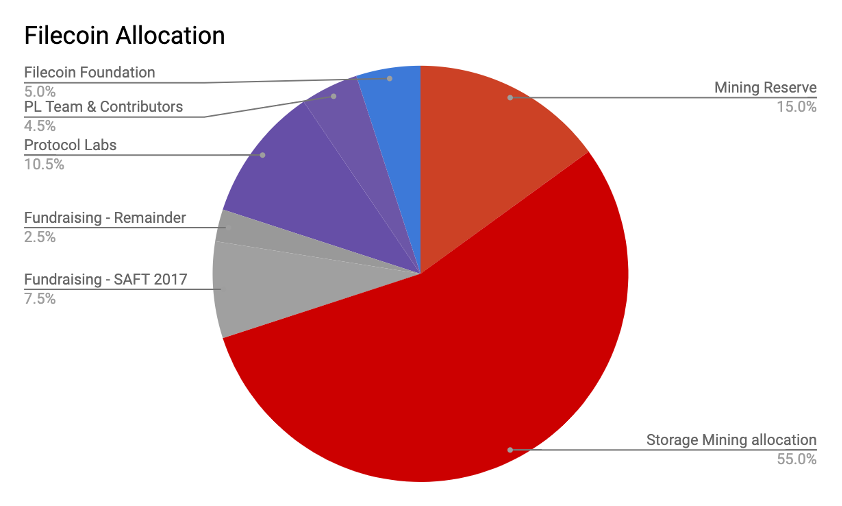
image description
(Source: Filecoin)
The ecological token of Filecoin is FIL, and the fixed maximum supply is 2 billion FIL.
70% of the total token supply (1.4 billion tokens) is used to reward miners, which is divided into:
— Simple minting: 330 million FIL tokens, released in a half-life of 6 years according to time. A 6-year half-life means 97% of tokens will be released in about 30 years.
— Baseline minting: 770 million FIL tokens, the main part of miner reward tokens, are minted based on network performance growth. These tokens will only be fully released when the Filecoin network reaches the storage capacity of Yottabytes within 20 years.
— Mining reserve: 300 million FIL tokens are reserved to incentivize future mining types. It is up to the community to decide how to release these tokens and which stakeholders should be incentivized, but for now this part of the total supply is reserved.
The Filecoin Foundation owns 5% (100 million), Protocol Labs 15% (300 million), SAFT investors 7.5% (150 million), and other early investors 2.5% (50 million).
Token vesting period:
Miners receive 25% of the reward immediately, with the remaining 75% unlocked linearly over 180 days. Block rewards obtained by unreliable storage nodes will be slashed and burned. The mining reserve has not been released yet, and the community will decide how to allocate it. According to the data of Filescan on August 23, 2022, the daily output of miners is about 290,000.
The 150 million FIL of SAFT investors are subject to the linear vesting clauses of 6 months, 1 year, 2 years and 3 years, and their distribution is as follows:
— 58% of SAFT tokens unlocked linearly over 3 years,
— 5% of SAFT tokens unlocked linearly over 2 years
— 15% of SAFT tokens are unlocked linearly over 1 year
— 22% of SAFT tokens are unlocked linearly over 6 months
The Filecoin mainnet was launched on October 15, 2020. It has been nearly two years so far, and 63% of SAFT tokens are still being unlocked. The daily unlocking amount is about 150 million* (0.58/3*365 + 0.05/2*365) = 89,726 pieces
The 100 million FIL of the Filecoin Foundation will be unlocked linearly within six years, with an average of 45,662 per day.
The 300 million FILs of Protocol Labs will also be unlocked linearly within six years, with an average of 136,986 FILs per day.
Note: The total circulating supply on Filescan is equal to the total token inflow (including mining rewards, vested SAFT tokens, paid mining reserves, and vested tokens originally owned by the Filecoin Foundation and Protocol Labs) minus the total Token outflow (including tokens locked on-chain or burned). Sites such as CoinMarketCap and CoinGecko use their own specific definitions for defining circulating supply in order to make comparisons between projects as standardized as possible. They only consider vested tokens of project teams (such as the Filecoin Foundation, Protocol Labs, and project team members) as part of the circulating supply when those tokens are transferred from their original wallets. Therefore, the circulating supply of Filecoin as defined by cryptocurrency price and market cap websites may be lower than the supply returned by the native Filecoin protocol API.
secondary title
5.3 Filecoin prospect analysis
Filecoin directly competes with the big players in the traditional cloud storage industry, aiming to provide cheaper alternatives and subvert the centralized cloud storage industry dominated by large companies such as Amazon, Google, and Alibaba. Filecoin's revenue in the second quarter of 2022 will be $5.7 million, a 118% increase from the first quarter. In terms of charging model, it is basically the same as traditional storage, and is charged on a monthly basis. For Filecoin to succeed in the cloud storage market, it needs to be able to compete on price. Even though Filecoin may be able to charge a certain premium in the long-term due to the security and decentralized nature of its network, large centralized companies still have a significant competitive advantage in terms of economies of scale and can continue to reduce prices. In the short term, it is still difficult for the decentralized cloud storage service providers represented by Filecoin to overtake in a corner.
Competitive Advantage:
1. The size of the project is huge, the funds are abundant, and the current ecosystem is complete, which is conducive to expanding the scale of application.
2. In terms of the Filecoin mechanism, the entire network pays the hardware cost of miners through block rewards to provide storage services. The storage service uses bidding to match transactions, and this bidding matching mechanism is conducive to reducing the price of storage services.
Competitive Disadvantage:
2. Based on the current download speed of the IPFS network, its performance and speed need to be further improved to meet the requirements of enterprise-level services.
6. Analysis of other items on the track
6.1 Arweave
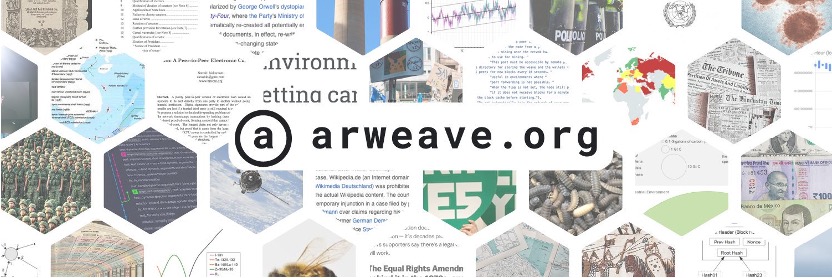
secondary title
The Arweave project was founded in 2017, and the main network was launched in June 2018. It is a protocol that focuses on one-time payment and permanent file storage. It provides a storage solution called Permaweb permanent network, which utilizes the immutable characteristics of the blockchain , directly write the content into the block for storage, so as to realize the real permanent data storage for the first time. Currently, the Internet loses 95% of its network information every 20 years. Arweave sets out to solve how to store data reliably for a long time, and uses Proof of Access (POA) to encourage miners to store history forever and share it as required. While miners receive new block rewards, they will also be affected by random events in the storage chain. Older blocks are rewarded, which means that the more total blocks a miner stores, the more rewards they get.
Instead of making a blockchain, Arweave made a blockweave, similar to the way woven fabric is held together by multiple strands of thread, blocks of fabric are held together by multiple links throughout a data store. For example the only way to add new data to a blockweave is if the server can call a randomly selected file (or group of files) already on the blockweave. Only those servers that can recall this previous random block can store any new data. This innovation in data storage, along with some new economic incentives for miners, has created the conditions for long-term preservation of data.
The arrival of Blockweave also unlocks several new capabilities for data storage. First, it makes the data both unchangeable and undeletable. It is nearly impossible to change any file that has been uploaded to a permanent network if copies of the file are replicated countless times across servers around the globe.
Second, payments for stored data no longer require monthly payments. Instead permaweb works on a one-time payment basis. The invention of data permanence also allows Arweave to enable others to build a persistent application ecosystem that can solve innovative problems on top of the Arweave protocol, which is the greatest potential and main focus of Arweave going forward. Incubate more and more permanent web applications that interact with its protocol. The potential capabilities of these permanent applications will be enormous for both developers and users. Arweave refers to these permanent web applications as profit-sharing applications because they have the same properties as Arweave itself, they are permanent, token-based and community-governed, and have a role for developers and users rather than Economic incentives for business. Similar to cooperatives, these profit-sharing communities aim to "share" profits between the developers and users of the app and token holders. Profit Sharing Communities changes the incentive structure of apps to create better alliances between developers and users and allow both parties to participate more fully in the app's success.
Arweave's revenue in the second quarter of 2022 was $193,000, a 31% increase from the first quarter.
Project Benefits:
Arweave focuses on one-time payment and permanent file storage, filling the gap in the market. Fundamentally, Arwaeve solves the problem of limited freedom of speech, excessive censorship, and easy tampering on the Internet today. At the same time, Arweave can also help organizations store complete, non-tamperable knowledge and information, such as for storing climate change databases. Currently, Arweave is working with the National Oceanic and Atmospheric Administration to permanently store ongoing carbon dioxide measurements to test Permaweb.
Arweave said that it will provide data storage costs similar to Moore's Law-style decline, users only need to pay a one-time upfront payment (about half a cent per megabyte), and the interest generated by overpayment will help subsequent storage services continue to decline. Arweave founder Sam Williams said, "In recent years, Arweave data storage costs have dropped by an average of 30% per year. As long as the rate is not lower than 0.5% (according to today's storage needs), the decentralized network can still afford the cost. Today's Payments will cover the cost of storage space for the next 200 years."
In terms of technology, the mining of Arweave adopts the RadomX algorithm, and at the same time introduces the parameters of the block integrity rate on this basis. Due to the characteristics of Arweave, its block size must increase exponentially with the use of the network. Considering the increasingly expanding block data, future nodes may not be able to store complete block data. Therefore, the introduction of block The complete rate parameter does not require all nodes to store complete block data, and competes for block packaging according to the number of blocks stored by nodes.
Project disadvantages:
Arweave features can be applied to data preservation based on HTML5 webpages, and to establish a decentralized H5-APP. However, in actual use, the application scenarios for issuing this certificate are relatively narrow. Currently, we can see that the most stored on Arweave The most important thing is the screenshot of some anti-government remarks on Twitter. The increase of explicit anti-government applications is worrying.
Finally, Arweave mainly focuses on one-time payment and permanent file storage. This model is relatively simple, and there is a certain risk that homogeneous projects will use the same storage concept and start a price war.
6.2 Storj
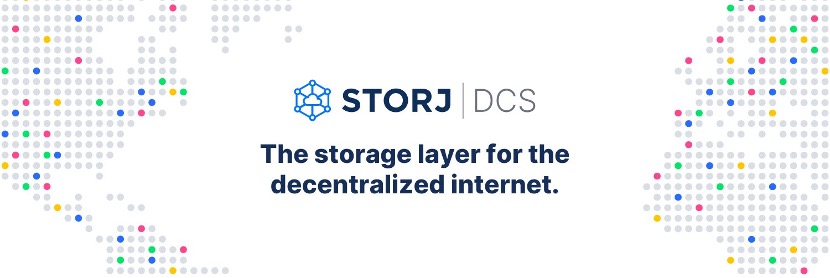
secondary title
Founded in July 2017, Storj is an Ethereum-based distributed cloud storage protocol developed by the for-profit company Stroj Labs. Storj aims to build a decentralized cloud storage platform that is free from censorship, monitoring, and non-stop. By utilizing idle hard disks and bandwidth, consultation, data transmission, and verification of data integrity and availability can be performed between any nodes on the P2P network. Retrieve data and store it. Storj's revenue in the second quarter of 2022 will be US$48,000, a 64% decrease from the first quarter.
Users can use its platform token $STORJ to purchase storage services on the Storj platform, and its model is similar to Airbnb and Uber. Users use idle storage space to provide storage services and get $STORJ rewards. Most small devices, such as NAS, personal computer, and Raspberry Pi, can install Storj nodes and rent out their own idle space, which is suitable for building an extremely decentralized cloud storage network and suitable for civilian mining. Storj claims to be the Uber of decentralized storage, which can reorganize social idle resources into usable commercial products.
6.3 Stratos

secondary title
Stratos - The next generation decentralized data network.
The Stratos network consists of four modules and three layers, providing developers with the lowest-level infrastructure. The four modules are blockchain, decentralized storage, decentralized database and decentralized computing. The three layers are value layer, resource layer and metadata routing layer, each layer is associated with a different consensus method. The value layer uses Proof-of-Stake (PoS) consensus, the resource layer uses Proof-of-Traffic (PoT) consensus, and the metadata routing layer uses Proof-of-Authority (PoA) consensus.
6.4 Ceramic
Ceramic is a decentralized open source platform for creating, hosting and sharing data, formerly known as 3Box, a user identity data protocol based on Ethereum, which can provide calculation, state transition and Consensus synchronization to obtain mutable dynamic data from static and immutable data on the storage protocol.
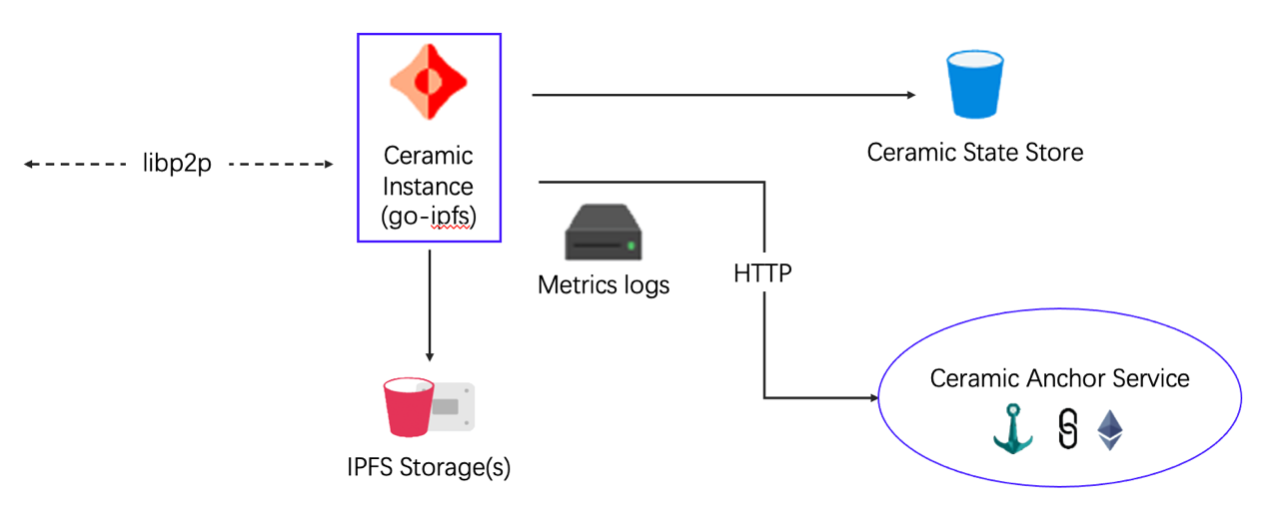
image description
Ceramin Node Stack (Source: CoinOn)
Cermaic aims to solve the more obvious defect of IPFS, that is, once the file is stored, it cannot be updated in real time, and it needs to be manually synchronized and dynamic, which is inefficient. Ceramic's steam process enables developers to build secure, trustless, censorship-resistant Dapps based on dynamic information without a trusted database server. Ceramic's core components include three:
1. Scalable and decentralized data infrastructure;
3. A marketplace of reusable data models created by the community.
6.5 Crust Network

secondary title
Crust Network is Polkadot's parachain designed to provide decentralized cloud storage services. As an important storage public chain of Polkadot ecology, Crust Network is expected to become an important part of Web3 infrastructure construction. The special design of Crust Network has two main points: MPoW (Meaningful Proof of Work) and GPoS (Proof of Secured Interest).
MPoW effectively solves the reporting problem of node workload, and has four characteristics of transparency, fairness, efficiency and development. To put it simply, the storage mechanism is simple and transparent, the workload of miners is directly proportional to the reward, the storage space is efficiently utilized, and the development of TEE has unlimited potential. Under the GPoS consensus mechanism, the Crust Network ecology produces four roles, namely validators, candidates, guarantors and users.
The verifier is the node that packs and generates blocks in the network, maintains the entire blockchain network, needs to store assets as a guarantee, and needs to be online in real time, which is similar to the miner nodes of the Filecoin network.
Candidates are nodes that compete to become verifiers but do not qualify for verification in the end. They also need to store assets as a guarantee and need to be online in real time. However, the role of the candidate is not fixed, and the candidate has the opportunity to become a validator.
A guarantor is an account that provides guarantees for any one or more nodes in the network, and guarantee income can be obtained by providing guarantees for nodes.
Users are the main body of storage needs, and use network storage space by paying CRU and other Crust Network tokens to purchase storage services.
About MEKO CLUB DAO
MEKO = ME Collaborating with the worldwide creators
MEKO CLUB DAO - a DAO organization focusing on cutting-edge information, in-depth reports and monetization of creative assets in the global creator economy (games, music, art, creativity, knowledge).
Our vision: Let creators provide more reasonable pricing and returns in the Metaverse world for the value of products and services provided by creators.
Our mission: to help overseas projects establish Chinese communities, help Chinese teams link overseas resources, and help creators and users become mainstream Web3.0 players.